Bo Widerberg’s New Swedish Cinema from Criterion
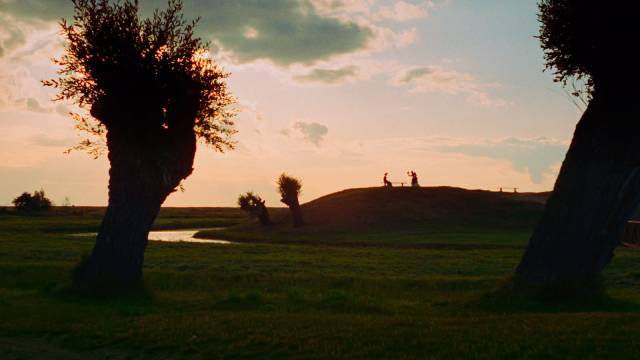
In the early 1960s, for the English-speaking world, Ingmar Bergman was synonymous with Swedish cinema. Gloomy, immersed in a seemingly endless crisis of faith and doubt, Bergman’s movies (with occasional exceptions like Summer with Monika [1953] and Smiles of a Summer Night [1955]) pushed away the real world of politics, economics and the grind of daily life in search of a God who stubbornly remained hidden from characters who sought desperately for reassurance that He did indeed exist.
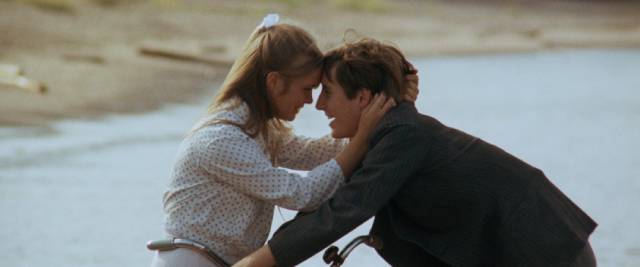
For novelist-turned-critic Bo Widerberg, this was infuriating and in 1962 he published a manifesto called Vision in Swedish Cinema in which he particularly took Bergman to task amidst a more general critique of the Swedish industry itself. His attack on complacency and “quality” bore an obvious resemblance to the Nouvelle Vague, a movement also begun by critics determined to tear down traditions which they viewed as out of touch with the messy realities of contemporary life and politics. Unlike the French, Widerberg also cited the “kitchen sink” dramas of the new British cinema movement which arose in the late ’50s, movies which for the first time offered an incisive critique of a moribund class system and treated working class life as a subject worthy of consideration.
Shortly after publishing his critique, Widerberg took the next logical step and, like the French Cahiers du Cinema critics, began to make his own movies, beginning with two shorts in 1962 before writing and directing his first feature in 1963 when the head of Europa Film reputedly sent him 250,000 kronor after reading the treatise with the admonition to “please film some reality”.
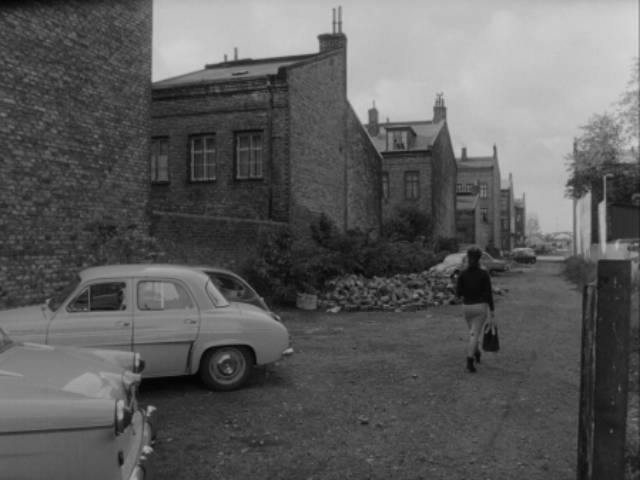
Barnvagnen (The Baby Carriage, 1963)
The influence of the New Wave is clear in Barnvagnen (The Baby Carriage, 1963), a slice of working class life seemingly grabbed on the fly by Jan Troell’s frequently hand-held camera. Striving for a documentary naturalism, the film has a loose structure which avoids imposing dramatic emphasis on individual moments, allowing events and characters to emerge and assume significance as they might in the normal flow of life. That life takes place in a society which seems to lack prospects for those born into the working class like Britt Larsson (Inger Taube), an aimless young woman stuck in dead-end jobs.
The course of her life is altered slightly by encounters with two men. First, she’s pursued down the street by a drunken Bjorn (Tommy Berggren), a chattering pest whom she makes no effort to avoid, even making a tentative arrangement to meet again. But he doesn’t show up at the agreed time, and she moves on to have a casual sexual encounter with Robban (Lars Passgård), a member of an up-and-coming band. Widerberg’s elliptical editing cuts from that encounter to Britt asking her co-worker about the signs of pregnancy.
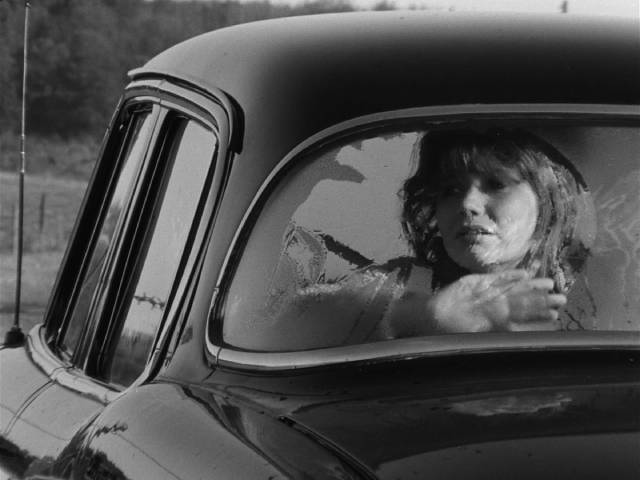
Robban isn’t a good prospect, but they move in together for a while. Then one day, by chance, she encounters Bjorn again and finds him more attentive and charming – and apparently not bothered that she’s pregnant with another man’s child. But Bjorn has Mommy issues which instill a deep distrust of women and eventually he becomes violent and abusive. After giving birth, Robban shows up to see the baby, but there’s no prospect of a renewed relationship; Britt will carry on alone, making her way as a single mother.
There’s an air of raw spontaneity to The Baby Carriage, an impression not so much of improvisation in the performances as experience captured on the fly by a documentary camera, the narrative such as it is stripped to its essentials, moving from one moment to another without wasting time on inessential connective tissue. In contrast to Bergman’s fraught dramas of inner conflict, Widerberg focuses on the material struggles of survival in a society which may provide the bare means of subsistence, but has little to offer in the way of individual purpose; Britt has to find her own meaning in the random flow of small (and occasionally large) events which come her way over which she doesn’t feel much control. Life happens and she just gets on with it.
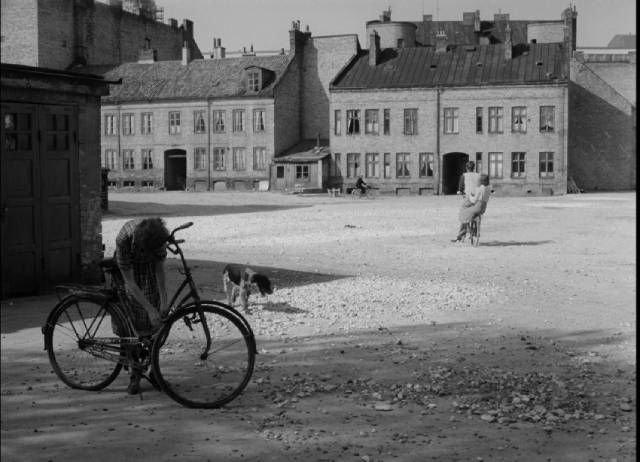
Kvarteret Korpen (Raven’s End, 1963)
Widerberg followed The Baby Carriage with another slice-of-life film, this time set in the past and seemingly more autobiographical. Kvarteret Korpen (Raven’s End, 1963), released just nine months later, is set in the director’s native Malmo during the 1936 Berlin Olympics, whose progress we overhear in radio broadcasts throughout the movie. Anders (Tommy Berggren) is the son of a working class family living in a tenement overlooking a bleak waste ground which gives the building and others in the neighbourhood the feel of cell blocks surrounding a prison yard.
Widerberg creates a sense of the community living in this bleak place, relationships among neighbours which range from warm and supportive to prickly, as seen by Anders who aspires to be a writer. At one point, he receives a response from a publisher in Stockholm to his first novel, a portrait of his family and neighbours, and assumes that he’s going to be published; but when he visits the publisher, it’s to be told that while he has talent his book is too strident and he needs to work on his tone.
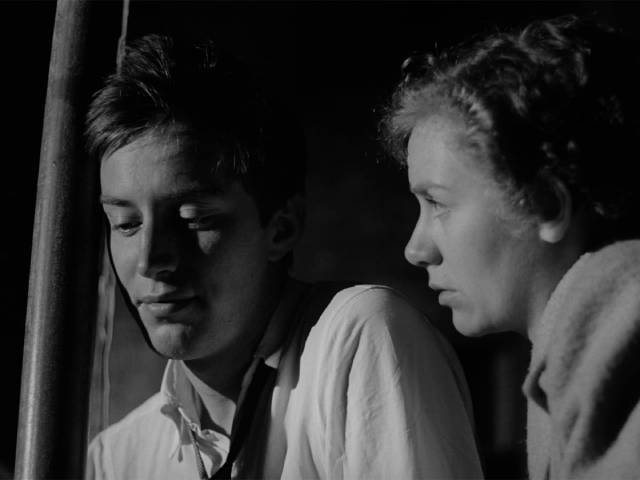
His disappointment creates a fracture through which he begins to see more clearly, discovering things about his parents which reveal them as individuals with their own flaws and conflicts. His father (Keve Hjelm) is an alcoholic who long ago lost all ambition, taking increasingly demeaning jobs – distributing flyers for a local store, wearing an advertising sandwich board – while his mother (Emy Storm) is barely holding together against a deep sense of hopelessness teetering on the edge of despair. Despite the sense of community, life holds few prospects and when Anders gets a neighbour girl (Christina Frambäck) pregnant, he’s faced with perpetuating the quiet despair of the previous generation. His act of moral betrayal in packing up and heading to Paris to pursue a writing career is a desperate act of self-preservation – although feeling guilty and ashamed, he nonetheless leaves.
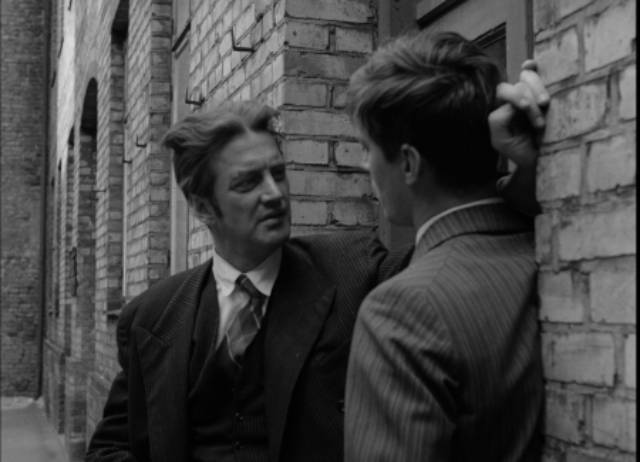
Overshadowing Anders’ personal choices and creeping in around the edges of his story are larger historical forces, the Depression and the rise of Nazism in nearby Germany. Every individual choice exists within a context of historical forces, each life a struggle to find meaning and purpose within and against those forces – with each choice made affecting others whose lives are entwined with those of the individual who exists as the centre of his own story. Inner turmoil is inextricably bound up with external consequences.
Widerberg followed Raven’s End with another contemporary movie, Love 65 (1965), which appears to be somewhat autobiographical, and Heja Roland! (1966), a comedy about a writer selling out to an advertising company. But then he seemed to alter course completely with his fifth feature.

Elvira Madigan (1967)
I first became aware of him with the international art house success of Elvira Madigan (1967), widely lauded as one of the most visually gorgeous romantic films ever made. I didn’t see it at the time, but got the impression that this was somewhat like the glossy romance of Claude Lelouch’s A Man and a Woman (1966) … something which didn’t hold much interest for me. Watching it immediately after the first two features is initially disorienting – its pictorial qualities, lushly photographed in colour by Jörgen Persson, seem antithetical to the realism of the previous films, while its period setting (the 1880s) pushes the story into a more easily romanticized past, detached from Widerberg’s social and political concerns.
As an opening text block tells us, this is based on actual events; Count Sixten Sparre (Tommy Berggren again), a cavalry officer, deserted when he met a circus tightrope walker who performed under the name Elvira Madigan (Pia Degermark), the pair running away to fulfill a romantic fantasy which eventually ended with their mutual suicide in a Danish forest. As the film begins, the couple have already abandoned their respective lives – Sixten has not only deserted the army; he has left a wife and two children – and are fully immersed in their romantic escape in what seems an impossibly sunny countryside, all luminous pastels and bird song (though, like a warning of what is to come, Sixten is stung by a bee as they lie together in a meadow).
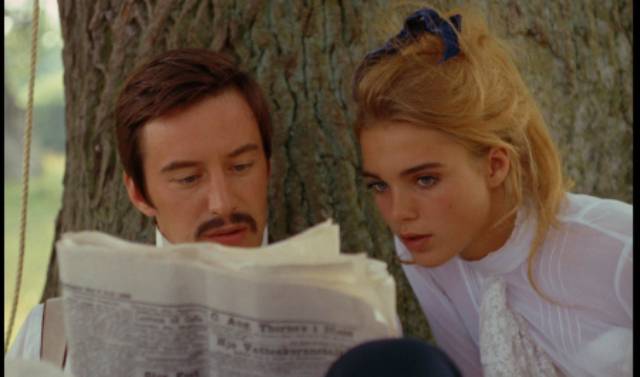
They find a small country inn and bask in their new-found love, but it turns out not to be possible to escape completely into the solipsistic bubble of their romance – their flight is a scandal which is written about in the papers and they are recognized by people who feel it their moral duty to report them to the authorities. If found, Sixten faces prison for desertion, though for Elvira the penalty would simply be shame and separation from the man she loves. And so they move on again, and make their way to Denmark.
On its surface, the film indulges in the visual cliches of novelettish romance – all that sunshine, the languid picnics in flower-filled meadows, the indulgent looks of those who, not yet knowing the full story, see only young love in full bloom. The camera lingers on Elvira’s face with its luminous openness, the sheer pleasure of being alive and feeling these warm emotions, and on Sixten, so enthralled that he’s abandoned everything to be with her.
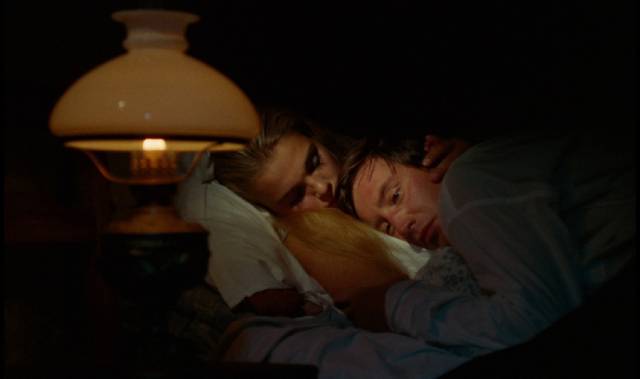
But gradually, cracks begin to appear beneath this glittering surface, and it becomes increasingly clear that the emotional idyll they share is unsustainable, that in fact it’s an illusion which can lead only to mutual destruction. This is where Widerberg’s earlier concerns come back into focus – this romantic pair, no matter how powerful their emotional attachment to one another, cannot exist outside of society; even lovers need a community within which to live. Their romance can’t survive in a social vacuum. Isolated, out of money, scavenging for food in the woods, their love turns sour and resentment creeps in. As their relationship evolves, the narrative transforms from a shimmering idealized romance to a critique of the self-destructive selfishness of these feelings which separate the pair from the social world we are all compelled to inhabit. Although the final choice to kill themselves seems inevitable, it is anything but a romantic tragedy – it’s a senseless waste of two lives which have lost their way.
If The Baby Carriage seems to draw on Francois Truffaut’s The 400 Blows (1959) as a model for the unsentimental treatment of working class lives, Elvira Madigan suggests a closer affinity with Agnes Varda’s Le Bonheur (1965) with its paradoxical use of enticingly luminous visuals to reveal the dark underside of romantic illusions.
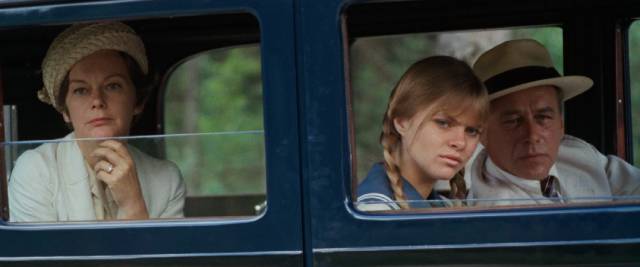
Ådalen 31 (1969)
In his next film, Widerberg combines the visual qualities of Elvira Madigan with the more overt treatment of the connections between the individual and community of Raven’s End. Ådalen 31 (1969) recounts a pivotal moment in modern Swedish history which led to the establishment of the Democratic Socialist state which has lasted more or less continuously since 1932. In a rural area of the country in 1931 workers strike against the sawmills which are the main source of employment in the region. As the strike drags on, tensions rise among both the strikers and the owners, and eventually scabs are brought in, triggering violence. One May day, as workers march in protest against the attempts to break the strike, the military open fire, killing some and wounding others, a shocking event which eventually led to the downfall of the government and the election of the Social Democratic Party.
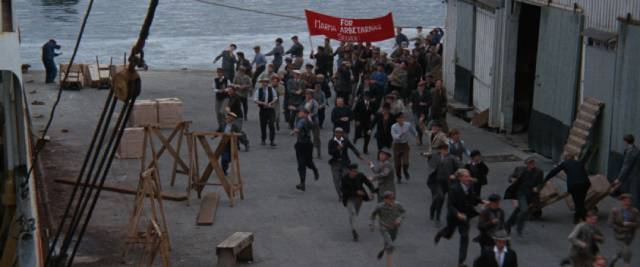
Widerberg tells this larger story through the eyes of two particular families – the Anderssons and the Björklunds, the former workers, the latter owners – and uses them to depict the ways in which divisions are complicated by complex social entanglements. Harald Andersson (Roland Hedlund) tries to avoid extremes, believing that talking and compromise are a better route to resolving differences than confrontation; Olof Björklund (Olof Bergström) wonders whether he and the other owners wouldn’t do better by actually paying their employees more, though he doesn’t break ranks with his fellow businessmen.
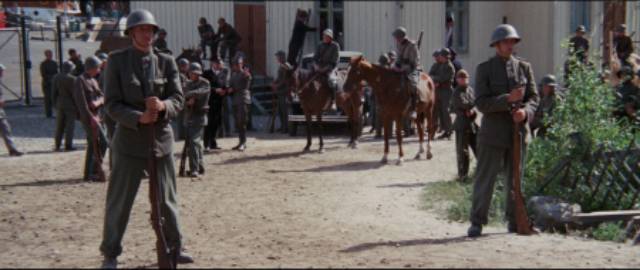
Complicating things, when Björklund’s daughter Anna (Marie De Geer) comes home from school for the summer, she becomes involved with Anderson’s son Kjell (Peter Schildt), eventually becoming pregnant. If there’s something a bit schematic about the way Widerberg sets up parallels and connections, his sensitivity to performance and the emotional nuances which connect the various characters keep the narrative vital as it builds towards the shocking and senseless eruption of violence. It’s clear that at the crucial moment no one is really in control – the soldiers seem as shocked as the workers when gunfire breaks out – and no one is willing to take the blame; the commander later drunkenly berates Björklund that while his men may have fired, the mill owners paid for the bullets.
*
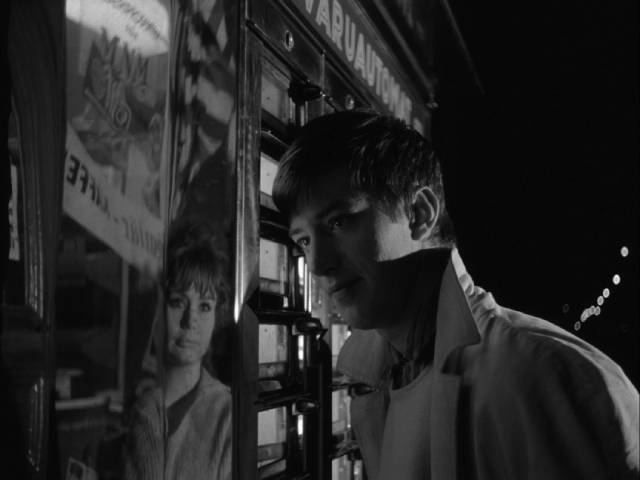
Criterion’s four-disk Blu-ray set Bo Widerberg’s New Swedish Cinema provides a fascinating study of a talented artist’s rapid development. The first two features are a forceful declaration of opposition to the dominant national cinema, with their raw naturalism and concern with social, economic and political issues. But within a couple of years, in his fifth and sixth features, Widerberg has already moved into a different register, realism supplanted by a more expressionist cinematic approach even though his thematic concerns remain much the same. The original documentary style has been left behind and with it a certain sense of urgency and immediacy – in effect, “art” has replaced “reportage”. While his skill in both registers is undeniable, I tend to prefer the earlier films which seem less self-consciously constructed, but that has more to do with my own temperament than any intrinsic values in the films themselves. Overall, the set is an excellent introduction to a filmmaker who deserves to be better known.
*
The disks
All four films have been beautifully restored from the original camera negatives, the transfers capturing the very different qualities of the black-and-white and colour cinematography. The first two films are sharply detailed with rich contrast, while the two colour films have a softer, dreamier look.
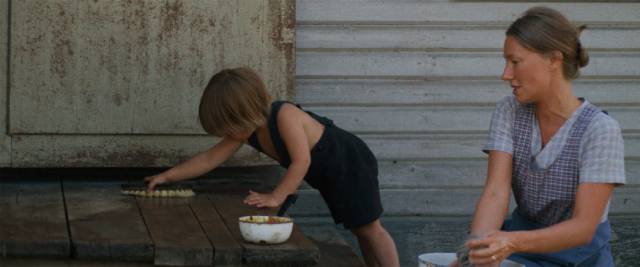
The supplements
There are a number of extras spread across the four disks, though perhaps not as substantial as they might have been – no commentaries and only a minimal amount on the historical events which inspired several of the films. There are recent interviews with filmmaker Ruben Östlund (14:52) about Widerberg’s position in Swedish film history; actor Tommy Berggren (18:26) about his lengthy collaboration with the director; and cinematographer Jörgen Persson (20:57) about working with Widerberg on Elvira Madigan and Ådalen 31, projects on which they explored the uses of colour together.
There are four brief archival television clips with Widerberg in which he speaks about his intentions with each of the features – The Baby Carriage (1963, 1:31), Raven’s End (1963, 6:59), Elvira Madigan (1967, 5:11), Ådalen 31 (1968, 4:20), the latter with union representative and survivor of the massacre Hjalmar Näsström. There’s also a very brief behind-the-scenes clip from Elvira Madigan (1:00).
Finally, there’s Widerberg’s first short film, The Boy and the Kite (1962, 30:03), made in collaboration with Jan Troell and already displaying the pictorial strengths of the early features and a sensitivity to performance, particularly with the child actor at the centre of the narrative. It’s Arild (Ale Möller)’s birthday, but his distracted father has forgotten; his mother is in hospital awaiting the birth of their second child and the boy feels neglected. But after visiting the hospital, his father takes Arild to the shore where the boy explores, watching other kids play, until his father constructs a kite and shows him how to fly it, redeeming the day. Already apparent is Widerberg’s (and Troell’s) attentiveness to location and understated treatment of emotions.
The set also includes a booklet with an informative essay by Peter Cowie and extracts from Widerberg’s 1962 manifesto with commentary by Mårten Blomkvist.
Comments